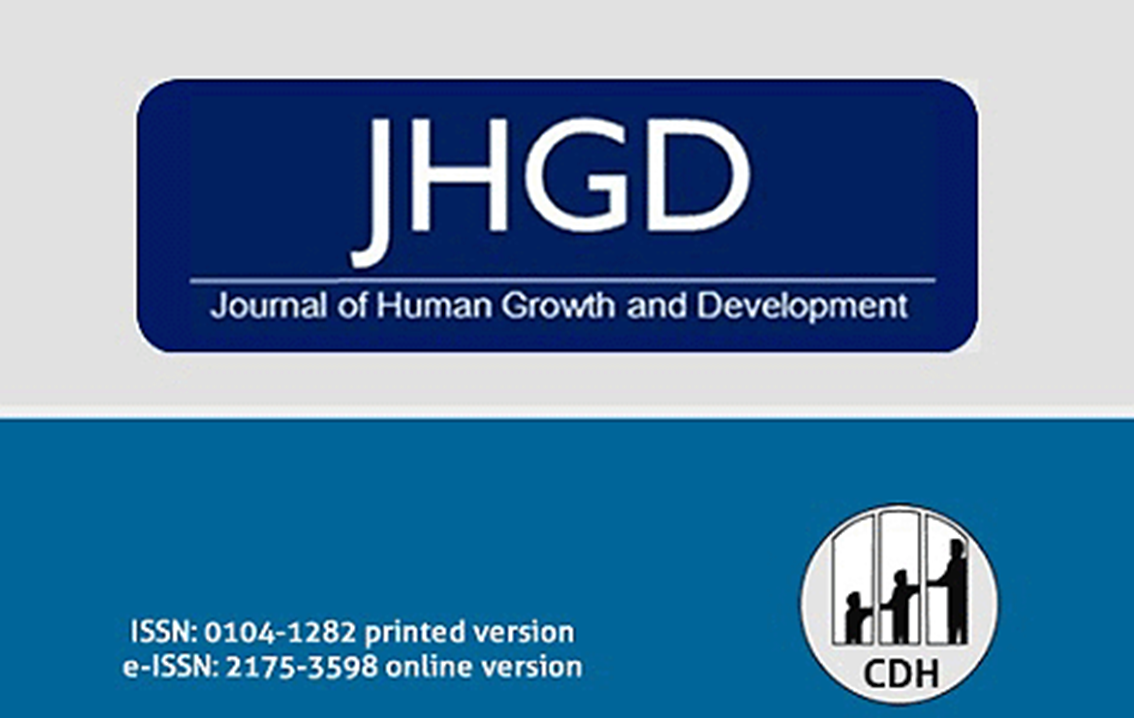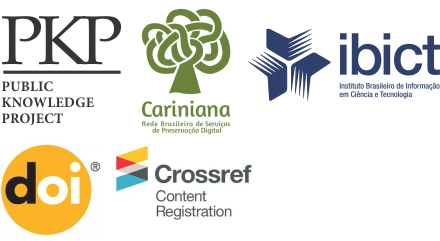Influence of type of birth on child development: a comparison by Bayley- III Scale
DOI:
https://doi.org/10.7322/jhgd.v30.10382Keywords:
Child development, Cesarean section, Normal birth, Bayley-III, PrematurityAbstract
Introduction: Elective cesarean section is associated with several damages to the newborn's health, such as respiratory and gastrointestinal problems and diabetes that last throughout life. However, few studies discuss aspects related to psychological development.
Objective: To investigate the development of Brazilian children according to the type of birth and gestational age in the cognitive, language, motor, socio-emotional and adaptive behavior domains.
Methods: This is an exploratory and descriptive cross-sectional study conducted in the city of São Bernardo de Campo, São Paulo, Brazil, between June 2016 and March 2017. The final sample consisted of 263 children up to 42 months of age. For data collection were applied a socio demographic questionnaire and the Bayley-III Scale. The statistical analysis was based on both a North American reference sample and a local sample using the SPSS version 21, through Pearson's Chi-square statistical test and significance criteria p <0.05.
Results: A significant difference (p<0.005) was observed, with a higher risk of problems in fine motor development and expressive language in children born at pre-term between 37- 39 weeks compared to those born at term between 39 - 41 weeks. Significant difference (p<0.005) was also observed in sensory processing and adaptive behavior, with greater impairment in children born via elective cesarean section compared to those born vaginally.
Conclusion: Despite its limitations and discrepancies, this research indicates potential impairments in the psychological development of children born at early term via elective cesarean.
Downloads
References
2. Fundação Osvaldo Cruz (FIOCRUZ). Nascer no Brasil: inquérito nacional sobre parto e nascimento. [cited 2020 Jun 11] Available from: http://www.ensp.fiocruz.br/portal-ensp/informe/site/arquivos/anexos/ nascerweb. pdf.
3. Teitler JO, Hegyi T, Plaza R, Kruse L, Reichman NE. Elective deliveries and neonatal outcomes in full-term pregnancies. Am J Epidemiol. 2019;188(4):674-83. DOI: http://doi.org/10.1093/aje/kwz014
4. Ferraro AA, Barbieri MA, Silva AAM, Goldani MZ, Fernandes MTB, Cardoso VC, et aI. Cesarean Delivery and Hypertension in Early Adulthood. Am J Epidemiol. 2019;188(7):12-96-1303. DOI: https://doi.org/10.1093/aje/kwz096
5. Conselho Federal de Medicina (CFM). Resolução CFM Nº 2.144/2016. [cited 2020 Jun 11] Available from: https://portal.cfm.org.br/images/stories/pdf/res21442016.pdf.
6. Lino HCL, Diniz SG. “You Take Care of the Baby’s Clothes and I Take Care of the Delivery” - Communication between Professionals and Patients and Decisions about the Mode of Delivery in the Private Sector in São Paulo, Brazil. J Hum Growth Dev. 2015;25(1):117-24. DOI: https://doi.org/10.7322/jhgd.96825
7. Sameroff A. A Unified Theory of Development: a Dialectic Integration of Nature and Nurture. Child Dev. 2010;81(1):6-22. DOI: https://doi.org/10.1111/j.1467-8624.2009.01378.x
8. RobsonSJ, Vally H, Abdel-Latif ME, Yu M, Westrupp E. Childhood Health and Developmental Outcomes After Cesarean Birth in an Australian Cohort. Pediatrics. 2015;136(5):e1285-93. DOI: https://doi.org/10.1542/peds.2015-1400
9. Chojnacki MR, Holscher HD, Balbinot AR, Raine LB, Biggan JR, Walk AM, et al. Relations between mode of birth delivery and timing of developmental milestones and adiposity in preadolescence: A retrospective study. Early Hum Dev. 2019;129;52-9. DOI: https://doi.org/10.1016/j.earlhumdev.2018.12.021
10. Severiano AAO, Dantas DS, Oliveira VLC, Lopes JM, Souza DS, Magalhães AG. Association between breastfeeding, obstetric factors and child development in northeast Brazil. J Hum Growth Dev. 2017;27(2):158-65. DOI: http://dx.doi.org/10.7322/jhgd.114483
11. Rodrigues SML, Silva PMM. O impacto do parto eutócico versus cesariana eletiva no desenvolvimento de competências da criança. Rev Enf Refer. 2018; 4(16):107-16. DOI: https://doi.org/10.12707/RIV17056
12. Bayley N. Bayley Scales of Infant and Toddler Development. Third Edition: San Antonio, TX: Pearson, 2006.
12. American Educational Research Association (AERA). American Psychological Association (APA). National Council on Measurement in Education (NCME). Standards for educational and psychological testing. Washington: 2009.
13. Ronfani L, Vecchi BL, Mariuz M, Tognin V, Bin M, Ferluga V, et al. The Complex Interaction between Home Environment, Socioeconomic Status, Maternal IQ and Early Child Neurocognitive Development: A Multivariate Analysis of Data Collected in a Newborn Cohort Study. PLoS One; 2015;10(5): e012705. DOI: https://doi.org/10.1371/journal.pone.0127052
14. Hanlon C, Medhin G, Worku B, Tomlinson M, Alern A, Dewey M, et al. Adapting the Bayley Scales of Infant and Toddler Development in Ethiopia: Evaluation of Reliability and Validity. Child Care Health Dev. 2016;42(5):699-708. DOI: https://doi.org/10.1111/cch.12371
15. Steenis LJP, Verhoeven M, Hessen D, van Baar AL. Performane of dutch children on the Bayley-III: a comparison study of US and Dutch Norms. Plos One. 2015;10(8), e0132871. DOI: https://doi.org/10.1371/journal.pone.0132871
16. Momo ARB, Graciani CSZ. Atividades Sensoriais: na clínica, na escola, em casa. São Paulo: Memnon Edições Cientificas, 2012; p. 23-36.
17. Liddle TL, Yorke L. Coordenação motora. São Paulo: MBoooks do Brasil, 2007; p. 36-56.
18. Pekçetin S, Sar?das B, Üstünyurt Z, Kay?han H. Sensory-Processing Patterns of Preterm Children at 6 Years of Age. Infants Young Children. 2019;32(1):33-42. DOI: https://doi.org/10.1097/iyc.0000000000000131
19. Bart O, Shayevits S, Gabis LV, Morag I. Prediction of participation and sensory modulation of late preterm infants at 12 months: A prospective study. Res Dev Disabil. 2011;32(6):2732-8. DOI: https://doi.org/10.1016/j.ridd.2011.05.037
20. Shimizu VT, Miranda MC. Processamento sensorial na criança com TDAH: uma revisão da literatura. Rev Psicopedag. 2012;29(89):256-68.
21. Al Khalaf SY, O’Neill SM, O’Keeffe LM, Henriksen TB, Kenny LC, Cryan JF, et al. The impact of obstetric mode of delivery on childhood behavior. Soc Psychiatry Psychiatr Epidemiol. 2015;50(10):1557-67. DOI: https://doi.org/10.1007/s00127-015-1055-9
22. Krogh MT, Vaever MS, Harder S, Koppe S. Cultural differences in infant development during the first year: A study of Danish infants assessed by the Bayley-III and compared to the American norms. Eur J Dev Psychol. 2012; 9(6):730-736. DOI: https://doi.org/10.1080/17405629.2012.688101
23. Rabie NZ, Bird TM, Magann EF, Hall RW, McKelvey SS. ADHD and developmental speech/language disorders in late preterm, early term and term infants. J Perinatol. 2015;35(8):660-4. DOI: https://doi.org/10.1038/jp.2015.28







